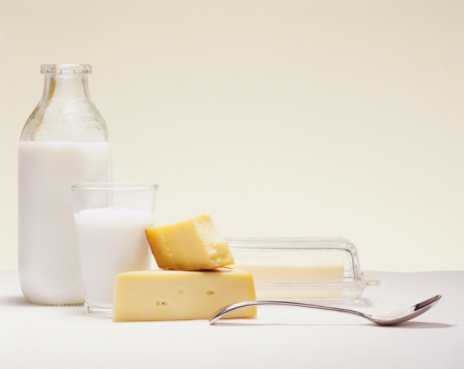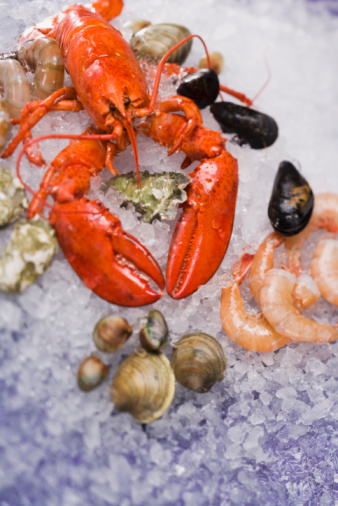
It is the fastest growing segment of the agricultural market today. Ten years ago, Certified Organic did not even exist in the United States, yet in 2010, eight years after USDA’s regulations officially went into effect, organic foods and beverages made $26.7 billion. The Scientific American Journal notes that in the past two years, certified organic sales have jumped to over $52 billion worldwide despite the fact that organic foods cost up to three times as much as those produced by conventional methods. More and more, people are shelling out their hard-earned cash for what they believe are the best foods available.
This surge of organic products and the popular demand for them has driven more and more main stream Americans requesting its substitution for their non-organic counterparts. In fact, the U.S. Department of Agriculture reported that organic sales has sky rocketed over 25 percent in the last year. A growing number of people are willing to pay a premium price to eat what they consider to be superior products and to support farming techniques that are better for the land.
But what does “organic” really mean? Well, first off, let’s revisit the opposite of organic; conventional farming, where farmers apply chemical fertilizers to promote plant growth. They use natural fertilizers, such as manure or compost, to feed soil and plants and sprays insecticides to reduce pests and disease. Use beneficial insects and birds, mating disruption or traps to reduce pests and disease. Herbicides are used in conventional farming to manage weeds. Rotate crops, till, hand weed or mulch to manage weeds. Animals are also given antibiotics, growth hormones and medications to prevent disease and spur growth.
Let's compare conventional farming to organic, where farmers give animals organic feed and allow them access to the outdoors. Preventive measures are used — such as rotational grazing, a balanced diet and clean housing is given to the animals— to help minimize disease. According to the USDA, a product labeled “100 percent organic” must contain all organic ingredients. If the sticker just says “organic,” a processed food product can have up to 5 percent non-organic ingredients by weight — if those ingredients are on the USDA’s “national list” of approved non-organic ingredients.
According to a study of organic food by Consumer Reports, a publication of the nonprofit Consumers Union, the labels on quite a few organic products are not worth an extra cent. An uninformed consumer can end up paying 50 to 100 percent more for products that are no healthier and a lot harder on the wallet. In most states, for example, wild or farmed fish can be labeled organic even though there is no guarantee that it is free from mercury or other industrial chemicals like PCB’s.
Some lobbyists and industry trade groups are fighting this measure. I was appalled to learn that many other organic-sounding, eco-friendly terms — like “free-range,” “cage free” or “pasture fed” in many cases mean very little. A so-called free-range chicken may only spend a few minutes a day outside, at best. Cage-free “may mean the animal is out of the cage” or it may mean nothing at all.
Before June of 2002, there were only five ingredients on the list: cornstarch, water-extracted gum, kelp, unbleached lecithin, and pectin. But the list just got longer and there’s quite a debate taking place as to whether this is good or bad for consumers.
In another report by the Huffington Post, bullet-pointed guidelines for organic foods that were established after June 2002 by the U.S. Department of Agriculture pointed to the term "organic" as a reference to foods grown and processed without chemical toxins, artificial ingredients, chemical preservatives or ionizing radiation, and to use these terms, producers must pay additional fees and follow strict guidelines and regulations:
❖ 100 percent Organic -- All ingredients are organic (except for added water and salt).
❖ Organic -- 95 percent or more of the total ingredients are organic (except for added water and salt, plus they must not contain sulfites added as a preservative. Sulfites have been known to provoke allergies and asthma in some people).
❖ Made with Organic Ingredients -- At least 70 percent of the ingredients are organic.
❖ Synthetically created chemical pesticides
❖ Synthetically created chemical fertilizers
❖ Sewage sludge
❖ Genetic engineering which appears to introduce novel proteins, allergens, viruses, and toxins into crops
❖ Irradiation.
❖ Fed only 100 percent organic feed, are not the offspring of cloned animals and have never been administered growth hormones or antibiotics. In addition, their meat must never be irradiated.
❖ Natural (or All Natural) meat or poultry products contain no artificial ingredients and are minimally processed. They are not necessarily organic.
❖ "No hormones administered" or "no antibiotics added" is sometimes seen on labels, but it can only appear if the producer can document the absence of hormone or antibiotic administration.
❖ Free-range or free-roaming poultry have access to the outdoors without a minimum time. They are not necessarily organic.
❖ Cage-free poultry means nothing as most chickens are kept indoors (but cage-free) if they are grown for meat.
❖ Comes from animals that were fed 100 percent organic feed and were not given antibiotics, prophylactic drugs or genetically engineered and synthetically created growth hormones (such as rBGH) for at least the last year.
❖ rBGH (recombinant bovine growth hormone) is a genetically engineered, synthetic chemical protein hormone vaccinated into cows to artificially boost their milk production. Like aspartame, rBGH has been banned in Europe because of the breast cancer risk that it may present.

❖ Produced by hens those are fed 100 percent organic feed and have never been given growth hormones or antibiotics.
❖ Cage-free eggs are produced by hens that are not confined in cages. The hens might not have access to the outdoors, though, and are not necessarily organic.
The USDA currently has no guidelines set for seafood; however, un-organic fish is often caged underwater and treated with pesticides to prevent the spread of disease.

Sadly, cereal and grain crops are regularly sprayed with pesticides that collect in the grain's outer layers, raising concerns about chemical residues in un-organic bread, cakes, and cookies.
Other Terms:
* Confusing and misleading to customers, the word natural is often a misnomer. There are no true guidelines for this term when used on a packaged product, although it is used frequently and often assumed to mean organic or healthier, but almost all fast food advertisements use this word to describe their fried foods. Just because the adjective natural is used, does not mean food is healthy or organic.
* Gourmet is another misleading term that leads consumers to believe that they are purchasing a product that is made finer ingredients, when in reality it has no established guidelines or regulations.
There are a few notes worth taking when looking deeper into the organic industry and labeling of foods. For starters, On June 9, 2007, the USDA added 38 non-organic ingredients to the national list: 19 food colorings (which scientific studies have found time and time again to cause ADHD and other behavior problems in adults and children), two starches, casings for sausages, hops, fish oil, chipotle chili pepper, gelatin, celery powder, dill weed oil, frozen lemongrass, and a sweetener called fructooligosaccharides.
These 38 items, chosen from more than 600 requested by food manufacturers, can now be used as minor ingredients in 95 percent organic products if a company can prove to its certifier that an organic version is not available in the quality or quantity needed. Could adding these 38 ingredients diminish the importance and the credibility of a lot of the organic products that are out there? Organic farmers tend to think so and are very concerned.
❖ Natural sausage casings (processed intestines)
❖ Celery powder
❖ Chia
❖ Colors derived from these 19 extracts, juices and spices: Annatto extract, beet juice, beta-carotene derived from carrots, black currant juice, black/Purple carrot juice, blueberry juice, carrot juice, cherry juice, chokecherry-aronia juice, elderberry juice, grape juice, grape skin extract, paprika, pumpkin juice, purple potato juice, red cabbage extract, red radish extract, saffron extract and turmeric extract.
❖ Dillweed oil
❖ Fish oil
❖ Fructooligosaccharides
❖ Frozen Galangal
❖ Gelatin
❖ Hops
❖ Inulin enriched with oligofructose
❖ Konjac flour
❖ Frozen lemongrass
❖ Unbleached orange shellac
❖ Chipotle Chili Peppers
❖ Rice Starch
❖ Sweet Potato Starch
❖ Turkish bay leaves
❖ Wakame seaweed
❖ Whey protein concentrate
A report from MSNBC stated that representatives from the Organic Trade Association (OTA) has witnessed hundreds or even thousands of minor non-organic ingredients such as the previous 38 examples in products labeled organic that are not labeled and conveyed to the public. This news is sure to come as quite a surprise to a lot of consumers. Ultimately, what consumers need to understand is that there are different degrees of organic, and because of inconsistent and misleading standards in organic labeling, research must be done at the consumer level to best ensure how the product is produced and or grown.
Resources: Organic.org, TheGoodHuman.com, MSNBC.MSN.com, kcet.org, Self.com, Parenting.com, FDA
